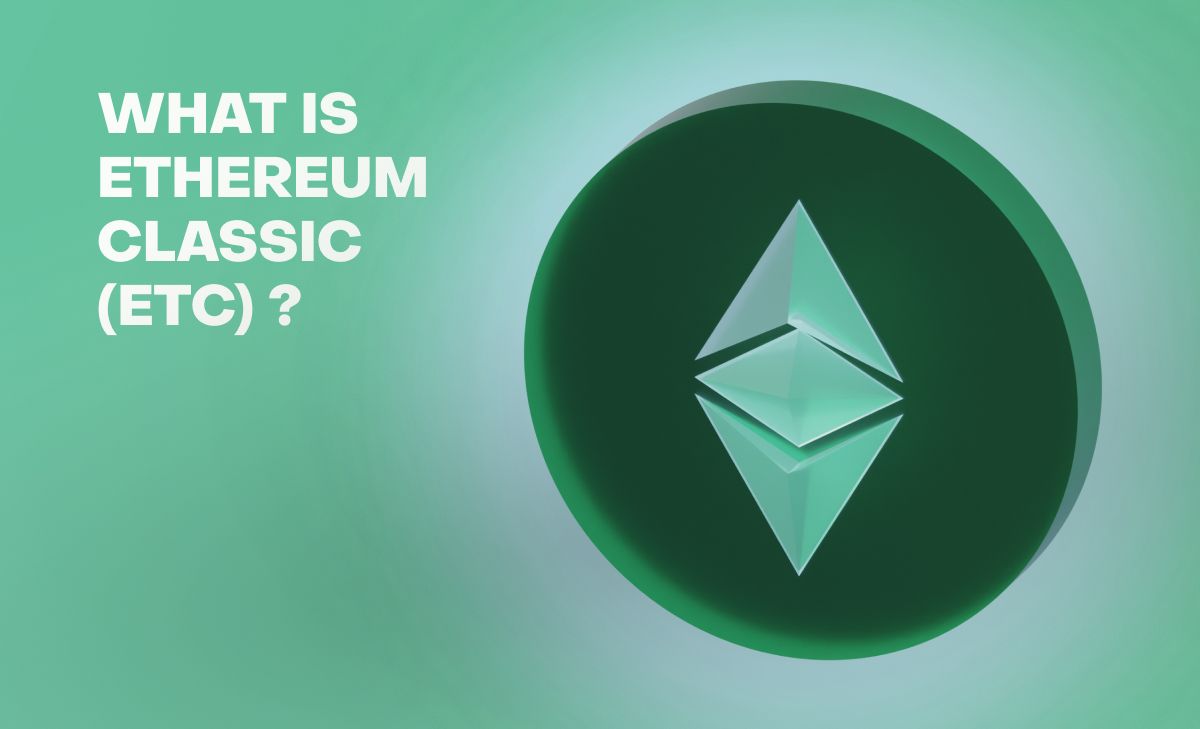In the dynamic world of cryptocurrency, Ethereum Classic, often referred to as ETC Classic, stands out as a distinct entity with its unique history and technological principles. What is Ethereum Classic? It's a question that leads us into a fascinating exploration of blockchain technology's evolution and divergence. Ethereum Classic embodies a commitment to originality and immutability in the blockchain space, setting it apart from its more widely known counterpart, Ethereum. As we delve into the story of Ethereum Classic, we uncover the principles and events that have shaped its journey in the digital currency landscape.
What Is Ethereum Classic (ETC)?
What is Ethereum Classic, often abbreviated as ETC Classic? It is a decentralized computing platform that enables the creation and execution of smart contracts and decentralized applications (dApps) without any third-party interference. Ethereum Classic is the continuation of the original Ethereum blockchain following a significant split in 2016. This platform upholds the principle of "Code is Law," emphasizing the immutability of the blockchain — a key characteristic that defines ETC Classic. As a cryptocurrency, Ethereum Classic facilitates secure and seamless transactions on this immutable platform, maintaining the legacy and original ethos of the Ethereum concept.
How Is Ethereum Classic Different from Ethereum?
Understanding the differences between Ethereum Classic and Ethereum is crucial in grasping what is Ethereum Classic. The divergence of these two platforms is rooted not just in their response to the DAO hack, but also in their philosophical and technical trajectories. Ethereum Classic, or ETC Classic, has remained true to the original vision of the Ethereum blockchain, prioritizing immutability and the principle that "Code is Law." This means that once transactions are recorded on the Ethereum Classic blockchain, they are permanent and unchangeable. In contrast, Ethereum has shown a willingness to adapt and make significant changes when deemed necessary by its community, including reversing transactions in extreme cases like the DAO hack. This fundamental difference in approach has led to a divergence in community, development, and overall ethos between Ethereum Classic and Ethereum.
Understanding Ethereum Classic (ETC)
To fully grasp what is Ethereum Classic, it's essential to understand its core philosophy and functionality. Ethereum Classic, or ETC Classic, operates on a decentralized network, utilizing blockchain technology to enable smart contract functionality and the development of decentralized applications (dApps). This platform is characterized by its immutable ledger, meaning once data is recorded, it cannot be altered or deleted. This commitment to immutability ensures that all transactions and smart contracts on the Ethereum Classic network are final and unchangeable, providing a level of security and trustworthiness that is highly valued in the blockchain community. Ethereum Classic thus offers a distinct approach to decentralized computing, appealing to users and developers who prioritize transparency and unalterable data.
History of Ethereum Classic
The history of Ethereum Classic is a pivotal chapter in the annals of blockchain technology. What is Ethereum Classic's origin story? It began with a significant event in the Ethereum network known as the DAO hack in 2016. A decentralized autonomous organization (DAO) built on Ethereum was exploited, leading to a substantial loss of funds. The Ethereum community was faced with a tough decision: to reverse the hack by performing a hard fork, or to uphold the principle of immutability. The decision to execute a hard fork led to the birth of two separate blockchains. Ethereum moved forward on the new forked chain, while Ethereum Classic continued on the original chain, maintaining the untampered history and embodying the ethos of "Code is Law." This event not only marked the divergence of two communities but also set the stage for ETC Classic to champion the cause of unaltered blockchain history.
Concerns of Ethereum Classic
While Ethereum Classic, or ETC Classic, is celebrated for its commitment to blockchain immutability, it is not without its concerns. One of the primary challenges facing Ethereum Classic is security. The network has experienced several high-profile security breaches, including 51% attacks, where a single entity gains control of the majority of the network's mining power. These incidents have raised questions about the robustness and resilience of the Ethereum Classic network. Additionally, the unwavering adherence to immutability, while a philosophical strength, can also be a practical limitation. It restricts the network's ability to adapt or rectify in the face of exploits or unforeseen vulnerabilities, a concern that continues to be a topic of discussion within the ETC Classic community.
Future of Ethereum Classic
The future of Ethereum Classic, or ETC Classic, is a topic of considerable interest within the cryptocurrency community. Despite facing challenges, particularly in terms of network security, Ethereum Classic continues to hold a unique position in the blockchain ecosystem. What is Ethereum Classic's path forward? The focus remains on strengthening its core principles of immutability and decentralization. Efforts are being made to enhance the network's security and attract more developers to build on the ETC Classic platform. Additionally, there is an ongoing commitment to maintaining compatibility with Ethereum, allowing Ethereum Classic to benefit from technological advancements made by its counterpart. As the blockchain landscape evolves, Ethereum Classic aims to solidify its role as a steadfast and immutable alternative, appealing to users and developers who value these foundational principles.
Goals of Ethereum Classic
The goals of Ethereum Classic revolve around maintaining the integrity and original principles of the Ethereum blockchain as it was conceived. ETC Classic aims to uphold the immutability of the blockchain, ensuring that transactions and smart contracts are irreversible and tamper-proof. This commitment to immutability is not just a technical feature but a core philosophical stance that differentiates Ethereum Classic from other blockchain platforms, including Ethereum. Furthermore, Ethereum Classic strives to foster a decentralized and secure environment for the development of applications, emphasizing transparency and resistance to censorship. By adhering to these goals, Ethereum Classic seeks to appeal to a segment of the blockchain community that values these foundational principles, ensuring its relevance and sustainability in the ever-evolving world of cryptocurrencies.
Where Can You Buy Ethereum Classic (ETC)?
As the original Ethereum chain, ETC has a novel branding tinge to it, which may compel some investors to remain within its ecosystem. However, it is safe to say that it lacks long-term development and interest compared to Ethereum. If you think it is worth buying, you can purchase ETC on almost every crypto exchange you've ever heard of — from Binance and Bitpanda, to Coinbase, WazirX, and Komodo Wallet.
Likewise, there are dozens of ETC wallets to choose from, including those that are integrated within web browsers. For example, Komodo Wallet provides a built-in Ethereum Classic wallet and decentralized exchange. In conclusion, it is challenging to say ETC is a good crypto investment at this stage of the game. The ETC price may undergo some speculation spikes, but it doesn't measure up when it comes to competitive smart contract blockchains.
Conclusion
In conclusion, Ethereum Classic, or ETC Classic, represents a unique and significant facet of the blockchain and cryptocurrency landscape. What is Ethereum Classic? It's more than just a digital currency; it's a symbol of adherence to the original principles of blockchain technology — immutability, transparency, and decentralization. Despite facing challenges and diverging from its sibling, Ethereum, Ethereum Classic has maintained its course, attracting a dedicated community that values its foundational ethos. As the digital currency world continues to evolve, Ethereum Classic stands as a testament to the diversity of thought and approach within this innovative and dynamic field. Its future, while uncertain, is undoubtedly an intriguing aspect of the ongoing development of blockchain technology.

